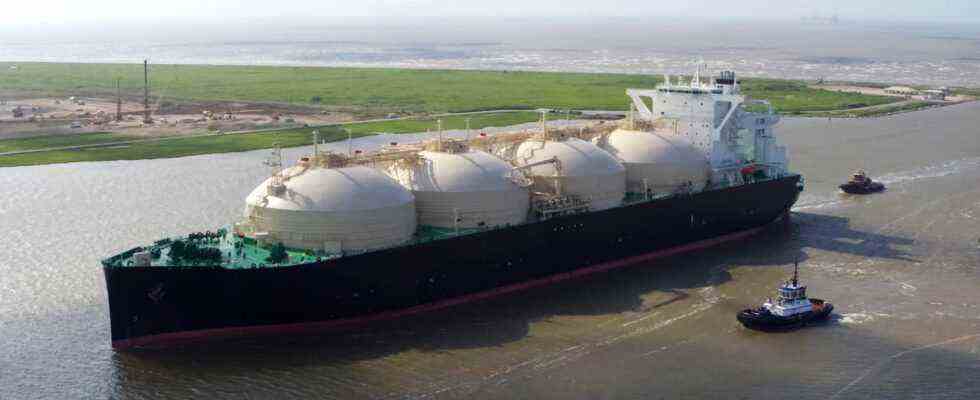Status: 02/22/2022 10:39 a.m
LPG is intended to reduce Germany’s dependence on Russian natural gas. So far, however, it has not been possible to import LNG directly. Now the plans for a first liquefied gas terminal in the Federal Republic are taking shape.
Germany’s first terminal for LNG (liquefied natural gas) is to be built in Stade, Lower Saxony. According to its managing partner Johann Killinger, the Hanseatic Energy Hub GmbH (HEH) wants to submit the application documents for the billion-euro project in the Hanseatic city this summer.
So far there is not a single LNG terminal in Germany. A direct import of liquid gas from countries such as Qatar and the USA has not been possible for the Federal Republic so far, although the importance of LNG as an alternative to Russian gas exports has increased significantly in the discussion since the situation in Ukraine came to a head.
The plans for plants in Stade and Brunsbüttel have been on the table for years. But German politics relied on the Russian partner instead of building an additional infrastructure for the import of liquid gas, as was done in many other European countries.
What is LNG?
LNG (Liquefied Natural Gas) is the name for liquefied natural gas. To obtain LNG, natural gas is cleaned of sulphur, nitrogen and carbon dioxide and cooled to temperatures as low as -162°C. This liquefies natural gas. This process reduces the volume by a factor of 600, which means that very large quantities of the liquefied energy carrier can be stored and transported.
Approval process should take at least a year
Now the plans for the plant in Stade are becoming more concrete, but the approval process will probably take at least one to one and a half years. “Then the building starts,” said Johann Killinger of the German Press Agency. It will be years before the plant on the Elbe is ready for use and Germany will still not be able to import LNG directly. Instead, German energy suppliers have to use terminals in Zeebrugge (Belgium), Dunkirk (France) and Gate (Netherlands) for the delivery of liquid gas.
In total, there are already 26 LNG terminals in the EU member states, the utilization of which can be further increased. EU Commission President Ursula von der Leyen pointed out last week that the European Union (EU) could compensate for a temporary interruption in Russian natural gas supplies by increasing imports of liquid gas. The fear that Russian President Vladimir Putin could turn off the gas supply to Europe in response to EU sanctions in the Ukraine crisis is growing.
The EU has therefore spoken with important LNG suppliers about increasing gas and liquid gas deliveries. “These efforts are now clearly paying off,” said von der Leyen. The development of infrastructure in recent years has also meant that Europe is better equipped to distribute gas and electricity between countries. Germany in particular is likely to be dependent on this in an emergency, as more than 50 percent of the gas requirement is covered by Russian natural gas.
Terminal in Stade costs 800 million
In order to escape dependency, Chancellor Olaf Scholz spoke out in favor of the construction of LNG terminals in Germany at the beginning of February. In addition to the location in Lower Saxony, a terminal is also planned in Brunsbüttel in Schleswig-Holstein. However, no concrete application documents have been submitted there either. In addition, around four years after the project was presented, there is still no date for a final investment decision. A spokeswoman for the carrier German LNG Terminal GmbH said last week: “In times of the corona pandemic, it is more difficult than ever to make reliable statements about the exact timing of the project, so that we refrain from doing so as before.” According to earlier information, the project could cost around 450 million euros.
There is already an investment plan for the project in Stade: 800 million euros in investments are currently planned for the terminal on the premises of the chemical group Dow Chemical. In addition, there are around 150 to 200 million euros for public port facilities.

